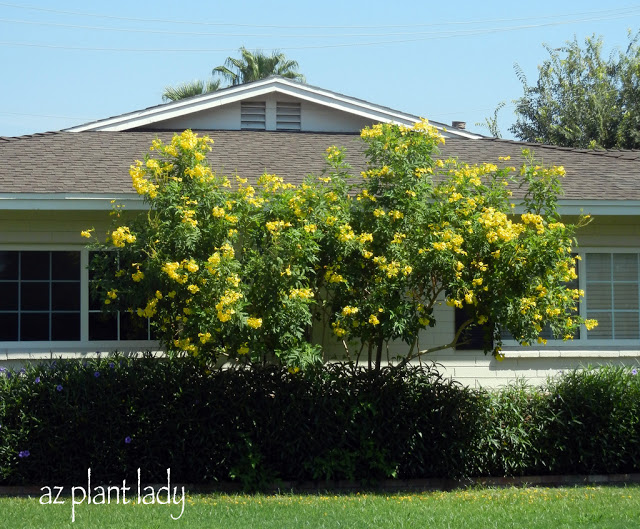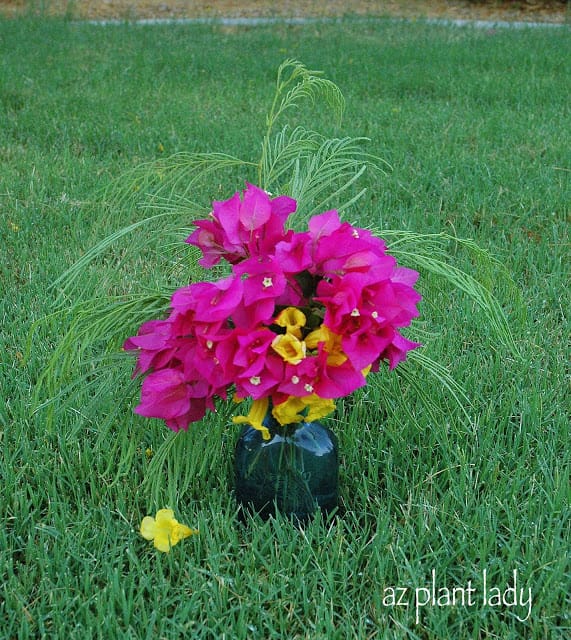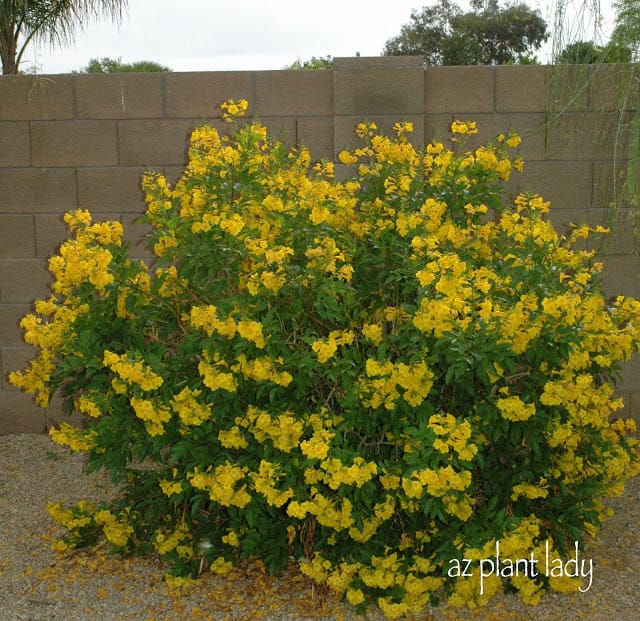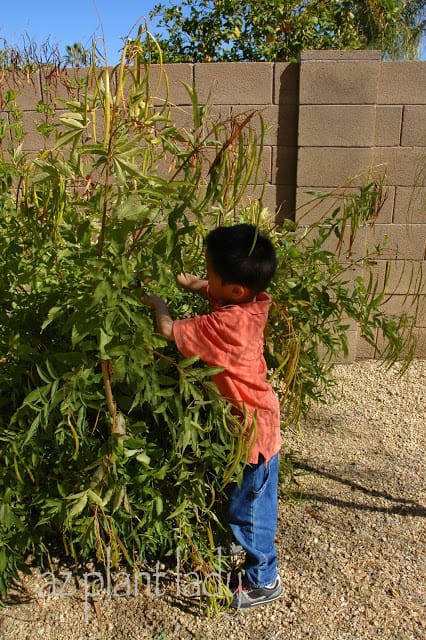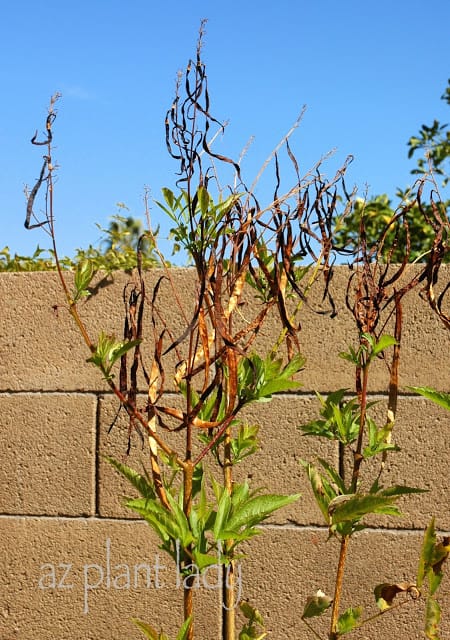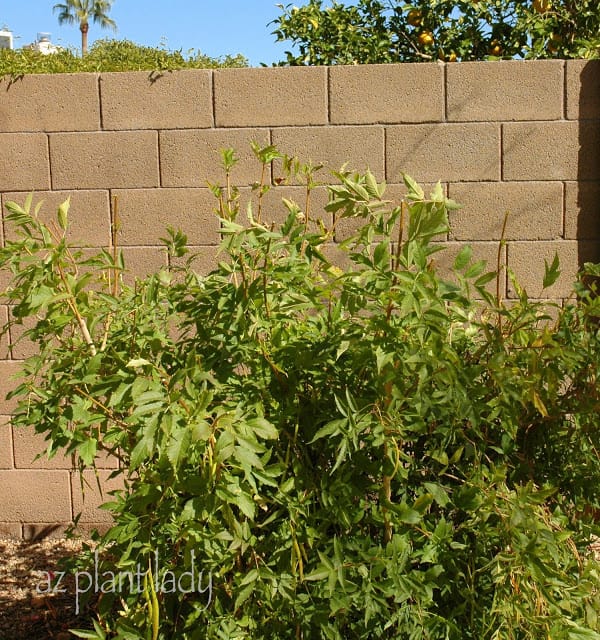
Last week, as I walked out into the back garden, I noticed something that didn’t look right with my a few of my yellow bell shrubs (Tecoma stans stans).
The photo, above, shows how they should normally look, however, last week, they looked like this….
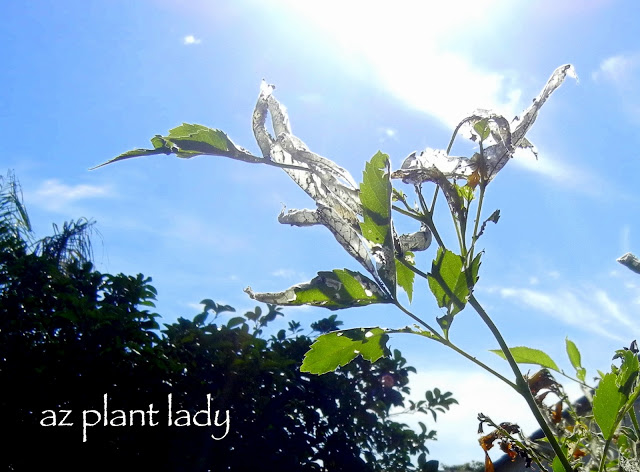
Definitely not normal looking and manyM of the outer leaves were skeletonized, and it got worse. All four of my yellow bell shrubs had the same symptoms. So, did my orange jubilee shrubs, which are closely related.

To be honest, I was a bit stunned to see the damage. You see, I had grown these beautiful shrubs for over 14 years and have never seen this before – not even in landscapes I managed or when consulting.
What was interesting is that other shrubs right next to my yellow bells and orange jubilee weren’t in the least bit affected. So, what is eating my leaves?
I looked at the symptoms – the skeletonized leaves, the fact that many of my leaves were ‘rolled’ and little black dots (insect poop) told me that my shrubs were suffering from ‘looper caterpillars’ which are tiny caterpillars that roll the leaf around them while they eat. It is hard to spot the caterpillars themselves, but the damage they cause, usually makes it easy to diagnose.
If your Tecoma or Bougainvillea shrubs show significant leaf damage, here are a few different options on how to treat it:
1. Prune off the affected growth and dispose of the leave in the trash can (not in your compost pile).
2. Treat your shrub using a biological pesticide that contains BT (Bacillus thuringiensis), which is ingested by the caterpillars. BT basically ‘eats’ its way from the caterpillar’s stomach outward. I use a ready-to-use-product.
**Whenever using any pesticide – follow directions carefully. For my shrubs, I will prune back the damaged growth and not apply pesticides. However, if the caterpillars continue to attack, then I may decide to use a product with BT.
So, if you have yellow bells or orange jubilee shrubs – check them to see if they are being affected by caterpillars.
**If your bougainvillea leaves are showing signs of being chewed – they may have been visited by ‘bougainvillea looper caterpillars.’ For more information on how to recognize and treat these caterpillars, click here.
Thankfully, the rest of my garden is looking healthy 🙂
Are Caterpillars Eating Your Shrubs? How to Recognize and Treat Them

